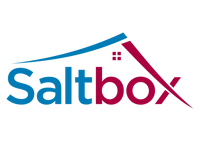Leverage Integrations to Complete Your Government Agency’s Digital Transformation
SaltboxAn iPaaS solution can benefit your government agency by effortlessly integrating business systems,...

February 10, 2023
Blog > How Low-Code Applications Are Key to Your Government’s Digital Transformation
This post was updated in February 2023.
What is low-code software, and how can it benefit governments in their digital transformations?
Sometimes called “no code,” low-code software offers a user-friendly interface that enables users to drag and drop instructions and commands instead of writing code.
Because the code is essentially pre-written and tested (in a way, you’re just assembling functions and features), low-code software has several benefits.
Here’s how low-code applications can help your government agency.
There’s a strong demand in the public sector for government agencies to deliver services like the private sector: quickly and exactly how the customer wants.
Meeting these standards is uniquely challenging for governments, partly because of the complexity of procuring and keeping up with the latest technology.
Fortunately, low-code software helps agencies be more responsive. Features such as drag-and-drop functionality and rapid testing enable you to quickly connect data sources and write automated workflows to add and remove services as they are conceived.
In addition, low-code applications often handle most of the “deployment” aspects of development for you. That means you don’t have to know how to launch servers or compile code—you can try new ideas and quickly test and change them. And because you’re essentially assembling pre-written code, your programs are less prone to error.
Government personnel who engage directly with the public know the pain points of services—and often have great ideas for solving problems. The challenge is getting those ideas onto the to-do lists of those who can implement them.
By reducing the need for technical know-how, those who request solutions can help build them. Low-code interfaces are user-friendly, with visual, interactive representations of what’s happening in the code. Often, if a person has used a flowchart diagram program (e.g., Microsoft Visio), they’ll be comfortable with low-code applications.
With some training, everyone in your agency can contribute to your digital transformation. Not only can they take over some tasks that traditionally require an IT specialist, they can also create solutions only imaginable by someone intimately familiar with the processes.
Because there are low-code applications for so many areas, you can use them to lighten your developers’ loads and use their expert coding skills on more complex projects.
This will become a critical approach as we face a growing shortage of software developers. As your agency continues its digital transformation, you’ll need programmers more often, and if one leaves or you add new projects without enough capacity, your progress can stall.
Even if you have the skillset in-house, your team may be swamped or have higher-value projects for their expertise. So, the more you can engage non-IT personnel in technology projects, the better. Low-code solutions make this possible.
Benefits such as speed, ease of use, and enhanced innovation mean faster headway in your effort to digitize your government services. But getting there still requires thoughtful, informed choices in selecting and implementing low-code applications.
Before investing in these solutions, consider which problems (or types of problems) need solving. Will a low-code solution offer outsized value? Will it help solve multiple problems, perhaps across multiple departments, for example?
It’s also critical for the software to integrate with some or all of your existing technology stack. Will it ‘play nice’ with your data sources and third-party applications? Knowing this can prevent headaches and unlock value.
Another significant consideration is if the solution can scale to meet new challenges. The promise to advance your digital transformation will be wasted if you must replace the software (and the “programming” you did) in a few years.
Finally, does the software vendor have a solid reputation for quality and customer support? You don’t want to be left in the lurch if something stops working or if new opportunities to use the solution require technical assistance to access.
Vision33 has decades of experience in the public sector and has hundreds of customers utilizing our proprietary low-code application, The Saltbox Platform.
 Saltbox is a born-in-the-cloud integration platform as a service (iPaaS) that enables you to integrate data sources and applications quickly and easily. With a central dashboard to view, manage, and create as many connections as you need, Saltbox is a powerful tool that gets your entire software stack integrated. Finally, you can automate time-consuming processes, unleash new features from existing software, and add new best-of-breed applications instead of replacing entire legacy systems.
Saltbox is a born-in-the-cloud integration platform as a service (iPaaS) that enables you to integrate data sources and applications quickly and easily. With a central dashboard to view, manage, and create as many connections as you need, Saltbox is a powerful tool that gets your entire software stack integrated. Finally, you can automate time-consuming processes, unleash new features from existing software, and add new best-of-breed applications instead of replacing entire legacy systems.
To learn more about The Saltbox Platform, access the on-demand webinar below or contact us for a demo!
Subscribe to our newsletter to receive our latest blog posts, case studies and ERP news delivered straight to your inbox.
An iPaaS solution can benefit your government agency by effortlessly integrating business systems,...
An integration platform as a service (iPaaS) solution is a unified integration layer that supports...
Boost efficiency, reduce costs, enhance service quality, and increase the life span and value of...
Recieve our latest blog posts, case studies, and ERP news
delivered straight to your inbox.